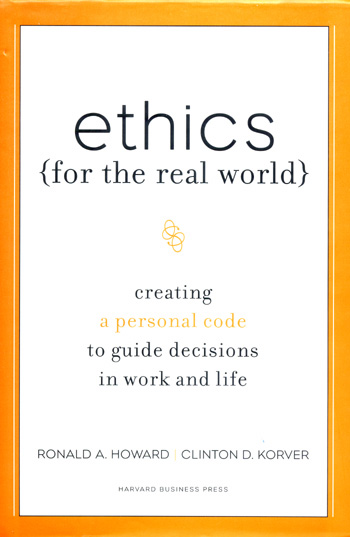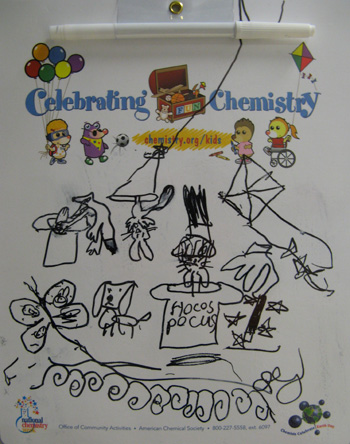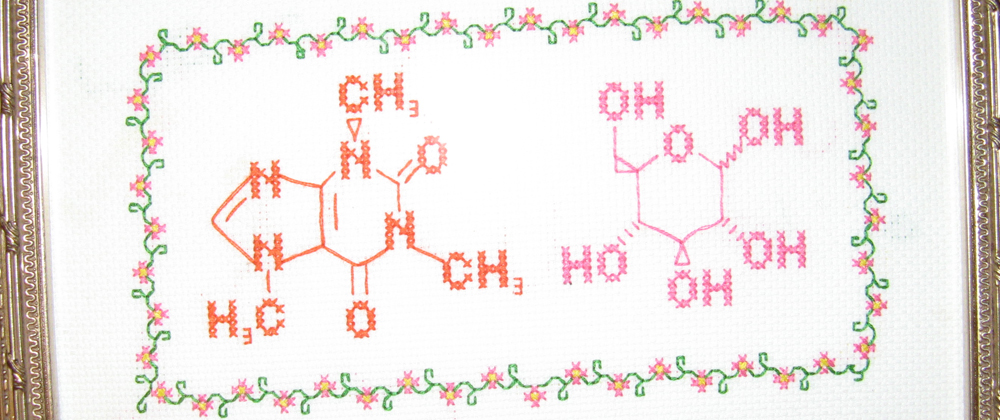I have misgivings about wading into Crackergate — indeed, even about dipping my toe into the edge of the pool (which is all I’m promising here) — but here goes.
First, let me commend the thoughtful posts by Mark Chu-Carroll and John Wilkins on the issue. If you haven’t read them yet, read them now. (If you’ve already read them, read them again.)
Next, let me set forth the disclaimers that I’d hope would be obvious:
Movie Review: Sizzle.
Randy Olson’s newest film, Sizzle, bears the subtitle, “a global warming comedy”. To my mind, it delivered neither the laughs nor the engagement with the issue of global warming that it promised. Maybe this is just a sign that I fall outside the bounds of Olson’s intended audience, but perhaps the biggest question this movie left me with was who precisely Olson is trying to reach with Sizzle.
Inescapable trade-offs?
Because the three-dimensional world has had me in a headlock (and a heat-wave), I’m tardy in passing on the news that ScienceBlogs is hosting a new blog, Next Generation Energy, that is slated to run from July 9 to October 9. On this blog, Seed editors, ScienceBlogs bloggers, and outside experts will be discussing future energy policy and alternative energy solutions.
Among other things, the folks at Next Generation Energy will have a weekly question they’ll try to answer from their various perspectives. This week’s question asks for predictions about the viable non-oil (and non-corn-ethanol) energy sources that might in the pipeline (figuratively, if not literally). It looks like there’s a potential for some really engaging discussions here.
And this brings us to the trade-offs.
Friday Sprog Blogging: dramatic developments in gene splicing.
The Free-Ride offspring are currently engrossed in a “creative dramatics” workshop, wherein they are learning all sorts of things about acting, characterization, costuming, and related matters in order to write, rehearse, stage, and perform a play. My kids are show people! Except that somehow, even when they’re being show people, the science wheels in their heads are still turning …
Younger offspring: We did an exercise where each group came up with a scene about one of the four food groups.
Elder offspring: My group did “dairy”. I was a brown cow who needed milking.
Younger offspring: My group did “meat”.
Dr. Free-Ride: And you a vegetarian! What were you in the scene?
Younger offspring: I was a cow that was used to make the cow-chicken.
Dr. Free-Ride: Say what?
Elder offspring: A cow-chicken. Half chicken, half cow.
Book review: Ethics for the Real World.

Ronald A. Howard and Clinton D. Korver (with Bill Birchard), Ethics for the Real World: Creating a Personal Code to Guide Decisions in Work and Life. Harvard Business Press, 2008.
I fully embrace the idea that ethics should not just be a subject of esoteric inquiry in philosophy departments but rather a central feature of our lives as we live them.
Yet how exactly that’s supposed to happen in a world where lots of people have been able to avoid ethics classes altogether presents a bit of a puzzle. Sure, we are presented with lessons about ethics outside the classroom, by family, friends, novelists and news commentators. But does a pile of maxims and sound-bites give us a coherent sense of ethics? Does it give us enough internal guidance to live lives we can be happy about?
Aetogate aftermath: paleontologists discuss the norms of their discipline.
Finally, here is the long awaited fourth part in my three part series examining the Society for Vertebrate Paleontology Ethics Education Committee response to the allegations of scientific misconduct against Spencer Lucas and co-workers. Part 3 was a detailed examination of the “best practices” document (PDF) issued by this committee. In this post, I make a brief foray into the conversations paleontologists have been having online about their understanding of the accepted practices in their field.
As these conversations are ongoing (and some of them are happening on listservs to which I do not subscribe), what I present here is just a snapshot of how some members of the professional community of paleontologists (and those in related fields) describe the working rules of their professional activities and interactions. What’s striking to me, though, is that these scientists are responding to the Aetogate controversy by having these conversations.
Quantum mechanics for fourth graders.

I had my kids with me at my office and needed to keep them occupied for a small chunk of time while I attended to business.
The younger offspring immediately called dibs on the “Celebrating Chemistry” markerboard.
The elder offspring, creeping up on 9 years old, asked plaintively, “What can I do?”
I scanned my office bookshelves. Given that I am trying to minimize the number of frustrating parent-teacher conferences in the coming school year, I passed right by the Nietzsche. After a moment’s hesitation, I pulled down my copy of David Z. Albert’s Quantum Mechanics and Experience. Handing it to my elder offspring, I said, “Try reading Chapter 1. I’m pretty sure you know all the words in it, and maybe you’ll find it interesting.”
The verdict, 16 pages later:
Seeing is believing.
Blogging has been a bit light lately, in part because I was persuaded to teach half of a graduate seminar during the summer session. The first half of the seminar looked at philosophical approaches to epistemology (basically, a set of issues around what counts as knowledge and what could count as reasonable ways to build knowledge). The second half, which I am teaching, shifts the focus to what scientists seem to be doing when they build knowledge (or knowledge claims, or theories, or tentative findings).
In the course of our reading for this week, I came upon a couple passages in a chapter by Karin Knorr Cetina [1] that I found really striking:
Friday Sprog Blogging: the element of surprise.
In case anyone remembers a post back in February which featured drawings by the elder Free-Ride offspring inspired by this kids’ book about the elements …
Dr. Free-Ride: Hey, you found that book! I’ve been looking for it.
Younger offspring: Yeah, I’m taking it with me to [the house of the grandparents who lurk but seldom comment] so I can read it while I’m there.
Dr. Free-Ride: But I was going to review it while you were gone.
Younger offspring: But I want to read it so I can learn about elements.
Dr. Free-Ride: Won’t you be too busy playing with the cat and bugging [Elder offspring] to read it?
Younger offspring: No, I’ll have time to read it and do those other things, too.
Dr. Free-Ride: What about the Friday Sprog Blog?
Younger offspring: When you and [Dr. Free-Ride’s better half] come to visit for the wedding maybe we can talk about something science-y.
In fact, when we arrived before the family wedding, this is what we found taped to the wall of our guest quarters:
Friday Sprog Blogging: competing expertise.
Elder offspring: Why do mice have long, naked tails?
Dr. Free-Ride: Why do the tails of rats look so much like earthworms?
Elder offspring: That doesn’t answer my question.
Dr. Free-Ride: Sorry, I thought we were just making a list of life’s mysteries.
* * * * *



